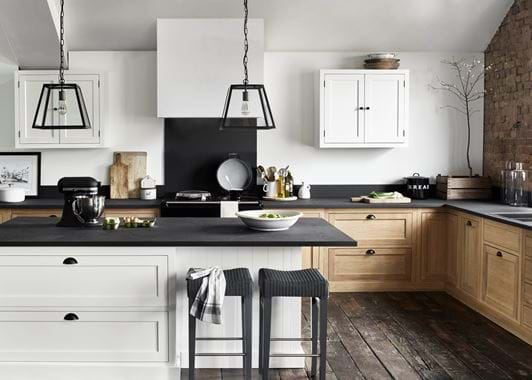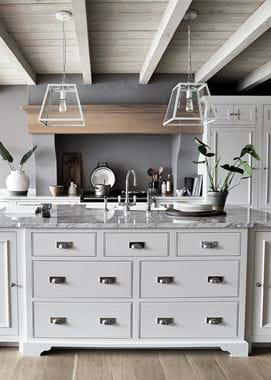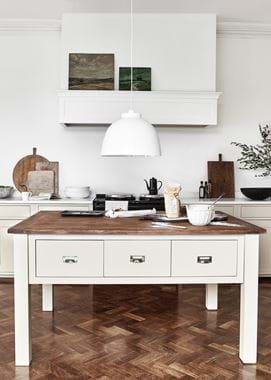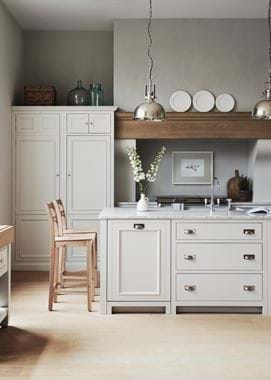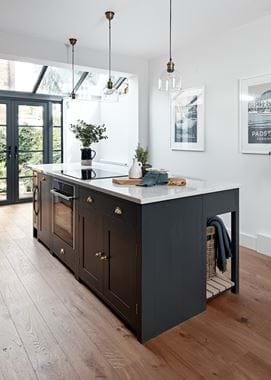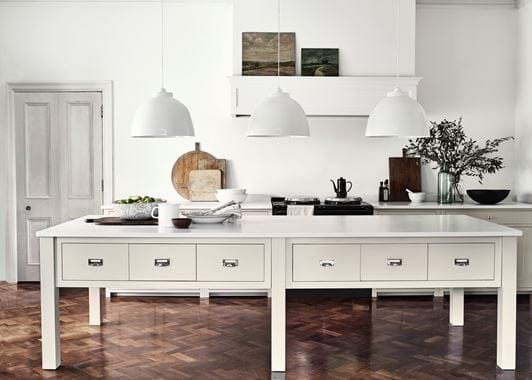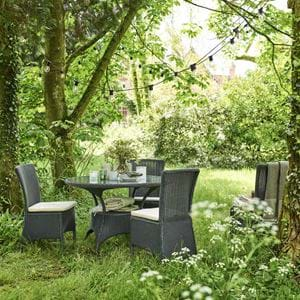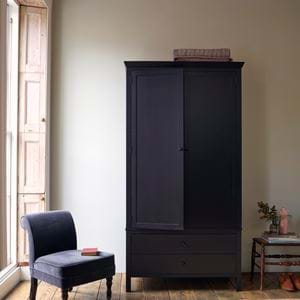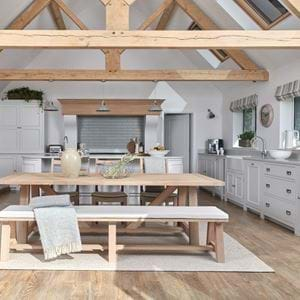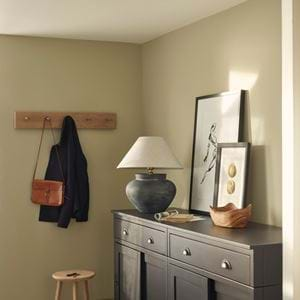How to dress a kitchen island
How to dress a kitchen island
Not everyone has space for an island in their kitchen, but if you do, it’s likely to be the focal point of the room. Planning the right storage into its design goes a long way to making it work well, but there are also other things to think about, such as what you put on the top. Here’s how to dress an island so you get the most out of it…
Colours and finishes
The first thing to consider is the finish of your island and how it relates to the rest of your kitchen. Painting the cabinets a different colour to the rest of the room and choosing a contrasting worktop material signals that it’s the heart of the space, where all the important things (such as cooking, eating and socialising) happen. Decorate your island this way and you may want to stick to a simple arrangement of essentials on top.
On the other hand, if your island matches the rest of your kitchen, you might want to draw the eye towards it with more of a display.
A third option is to match the island’s cupboards to the rest of the kitchen, but pick a different, statement material for the work surface to make it stand out. This can be really effective in a neutral room scheme, as you’re using the textures and tones of a material to do the talking (the timber work surface on the Charlecote island pictured is a perfect example).
If your island will be a hardworking part of your kitchen, it’s a good idea to choose a long-lasting finish for the work surface that will age beautifully and can weather a few spills and scratches, such as granite.
Adding accessories
The general rule for dressing a work surface is this: the more dramatic the colour and finish of your island, the more minimal the display. This applies equally if you’ve built things such as a hob, sink or breakfast bar into the island – in this scenario, it’s a good idea not to clutter the surface with too many objects that might get in the way. The essentials could be a wooden chopping block, some pots of fresh herbs and a stand for recipe books, positioned so that you’re not constantly moving things around when you need to cook.
Baskets are useful for keeping things like utensils and napkins at hand, or you might want to use one for storing fruit or bread. A shapely basket can also look really beautiful as a centrepiece on your island.
When it comes to pottery and glassware, consider scale first. Things like vases, platters and fruit bowls should be large enough to hold their own when you look at the room as a whole, but not so big that they’re impractical to have on your work surface. Islands need to be functional, so they aren’t really a place for breakable bone china pots and plates, either. Instead, opt for sturdier materials like stoneware – they’ll complement the island’s strong shape too.
Like baskets, vases of flowers can also be an impressive centrepiece for an island, but we think simpler arrangements of tall stems work better than big bouquets (three sprigs in a white china vase are all that’s needed to bring the Chichester kitchen pictured to life). It’s partly to do with scale – islands tend to be quite big and wide, and a little height helps balance this out – but it also comes back to practicality and keeping your worktop functional. (If you use your island for eating, you might also want to avoid strong floral scents in favour of greener, herby aromas or life-like flowers.)
Large platters and marble blocks are great for grouping similar things together, especially when you need easy access to them – think herb pots, salt and pepper grinders or olive oil.
If your hob is built into the island, try using a pitcher or vase beside it for wooden spoons and spatulas – objects used in unexpected ways like this are always eye-catching.
Where to put things
Placement of objects can make all the difference to how your island looks. Try to avoid having everything sitting dead centre – it can feel a little stiff – and instead group things to one side. This will make any display feel more relaxed and also frees up space at the other end for more practical jobs.
Also, think about how you can echo objects around the room to link the island with its surroundings. For example, you might have a collection of beautiful wooden chopping boards, one on the island and others hanging on the wall or displayed along a splashback (as in the cream Suffolk kitchen with Charlecote island, pictured). Or you could use plants and greenery as a visual theme. Pottery in one or two colours that complement your space is another idea. And so on…
How to light your island
To our way of thinking, the best way to light an island is with overhead pendants. They’re the most efficient choice in terms of space and if you have them fitted with dimmers and on adjustable cables, they can be as functional or as atmospheric as you need them to be.
Choose lights that complement the style of your island – industrial metal pendants add a modern touch to the Chichester kitchen shown here, for instance, whereas clear glass designs give a lift to the dark blue island in a Suffolk kitchen – try our Shaftesbury pendant for a similar look.
A row of lights is both useful and elegant – position them so they light the island’s whole length. Finally, for a “spotlight” effect, place favourite objects you want to highlight directly underneath.
Get to know our kitchens and their islands in store or in our kitchen brochure.

